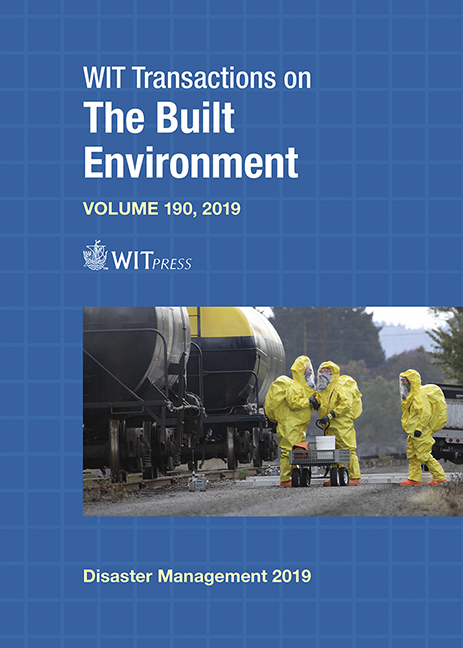BUILDING BACK BETTER WITH VULNERABILITY: POST-HAIYAN REFLECTIONS ON RISK PERCEPTION
Price
Free (open access)
Transaction
Volume
190
Pages
9
Page Range
41 - 49
Published
2019
Size
278 kb
Paper DOI
10.2495/DMAN190041
Copyright
WIT Press
Author(s)
MICHIKO BANBA, MARIA MAKABENTA IKEDA, MAYUMI SAKAMOTO, YOSHIKI TOMINAGA
Abstract
Several studies show that the lack of information about the scale of disaster risks contributed to the increased vulnerability of many people affected by Typhoon Haiyan in 2013. A conceptual framework based on the behavioural intention model is used to examine how demographic attributes, experience of disaster occurrence, knowledge about natural hazards and community-based disaster risk reduction efforts affect disaster risk perception. We analyse how effective disaster knowledge and community efforts are in raising risk awareness and influencing risk reduction behaviour. A questionnaire survey is conducted among households living in the cities of Tacloban, Palo and Tanauan, located along the north-eastern coast of Leyte, Philippines. Using structural equation modelling (SEM), we empirically test hypotheses on risk perception and behavioural intention to reduce disaster risk using data from 282 households. We attempt to investigate how risk perception and risk reduction behaviour are affected by two elements that we think can be potentially harnessed for sustainability of the build-back-better process: (a) knowledge about disasters and (b) community efforts. Our results show model compatibility for the variables (1) disaster experience, (2) risk perception and (3) knowledge about natural hazards. On the other hand, we find weak model compatibility for the variables (1) disaster education and (2) community efforts.
Keywords
disaster risk reduction, knowledge, risk perception, behavioural intention model, adaptive behaviour, intention, disaster education, community, vulnerability, resilience




